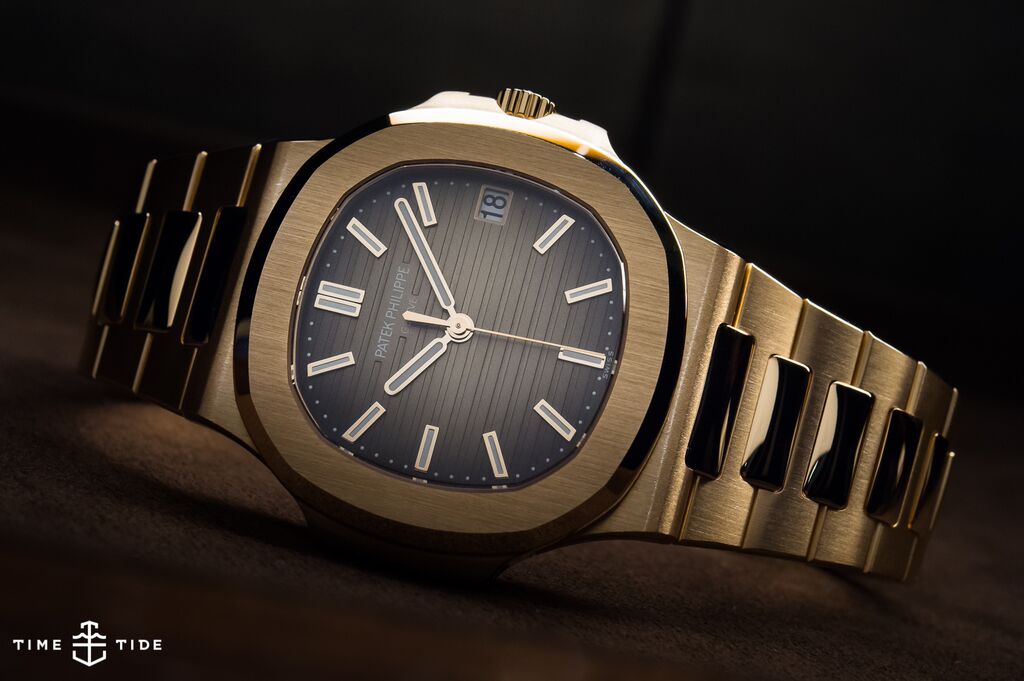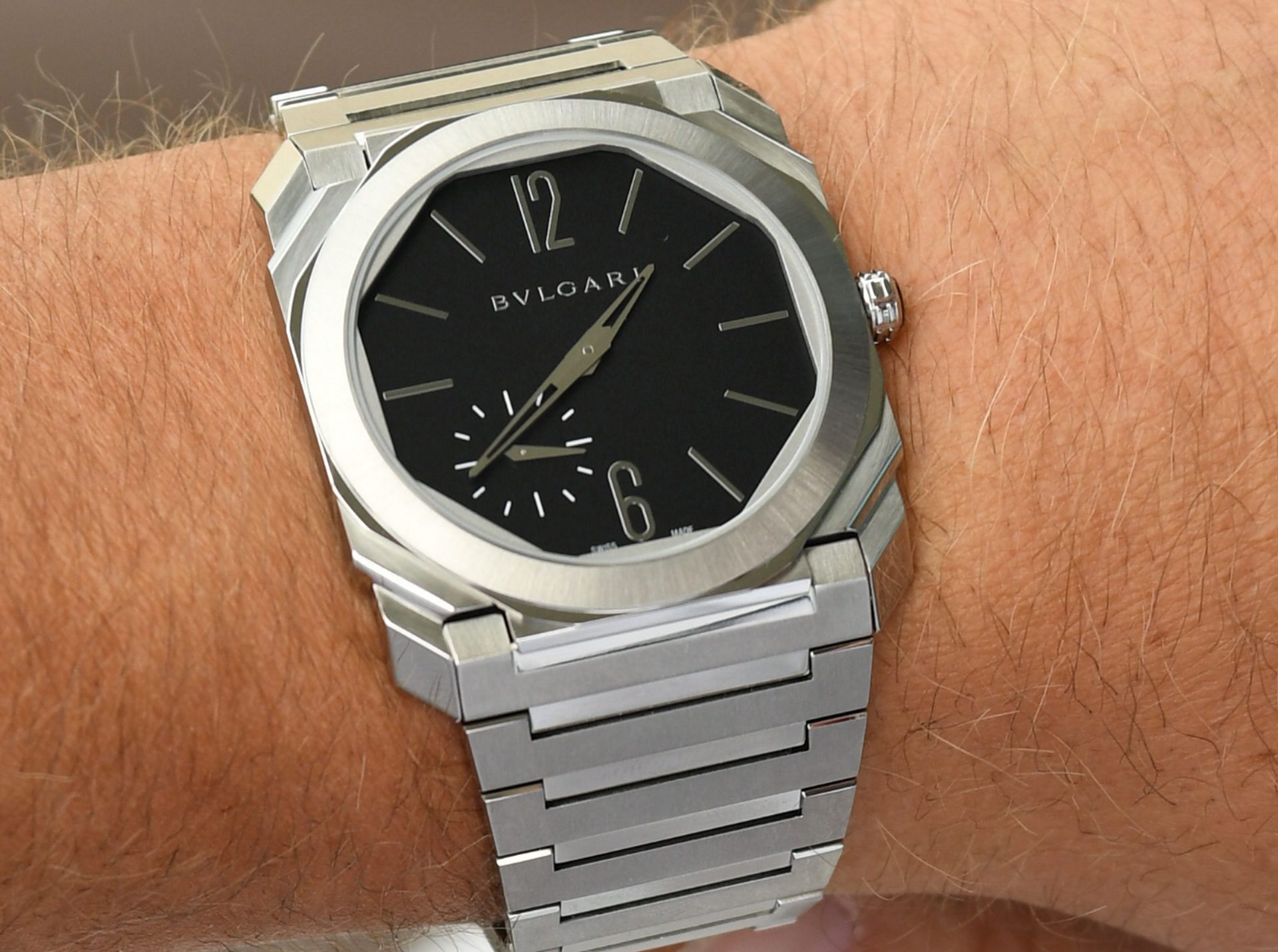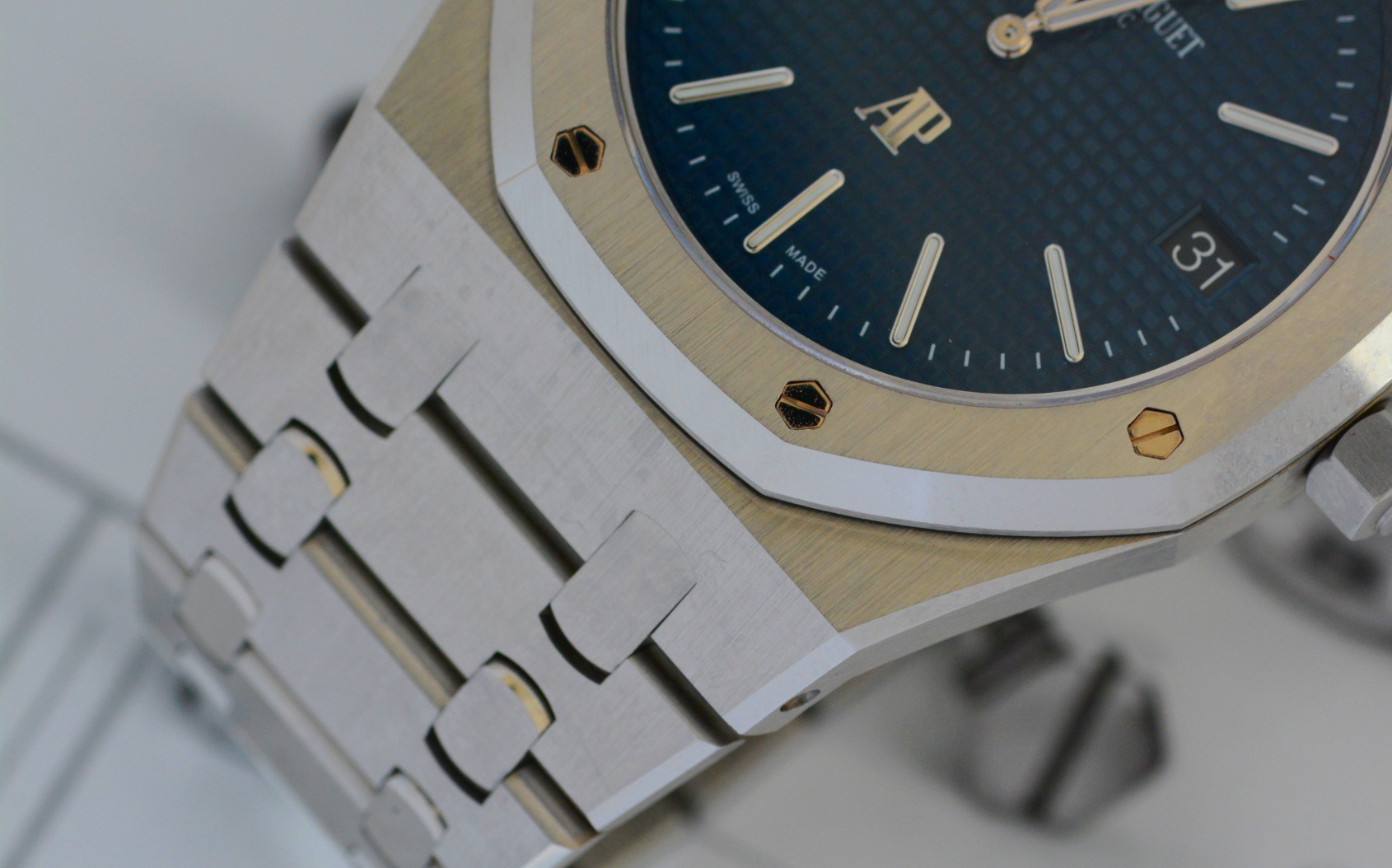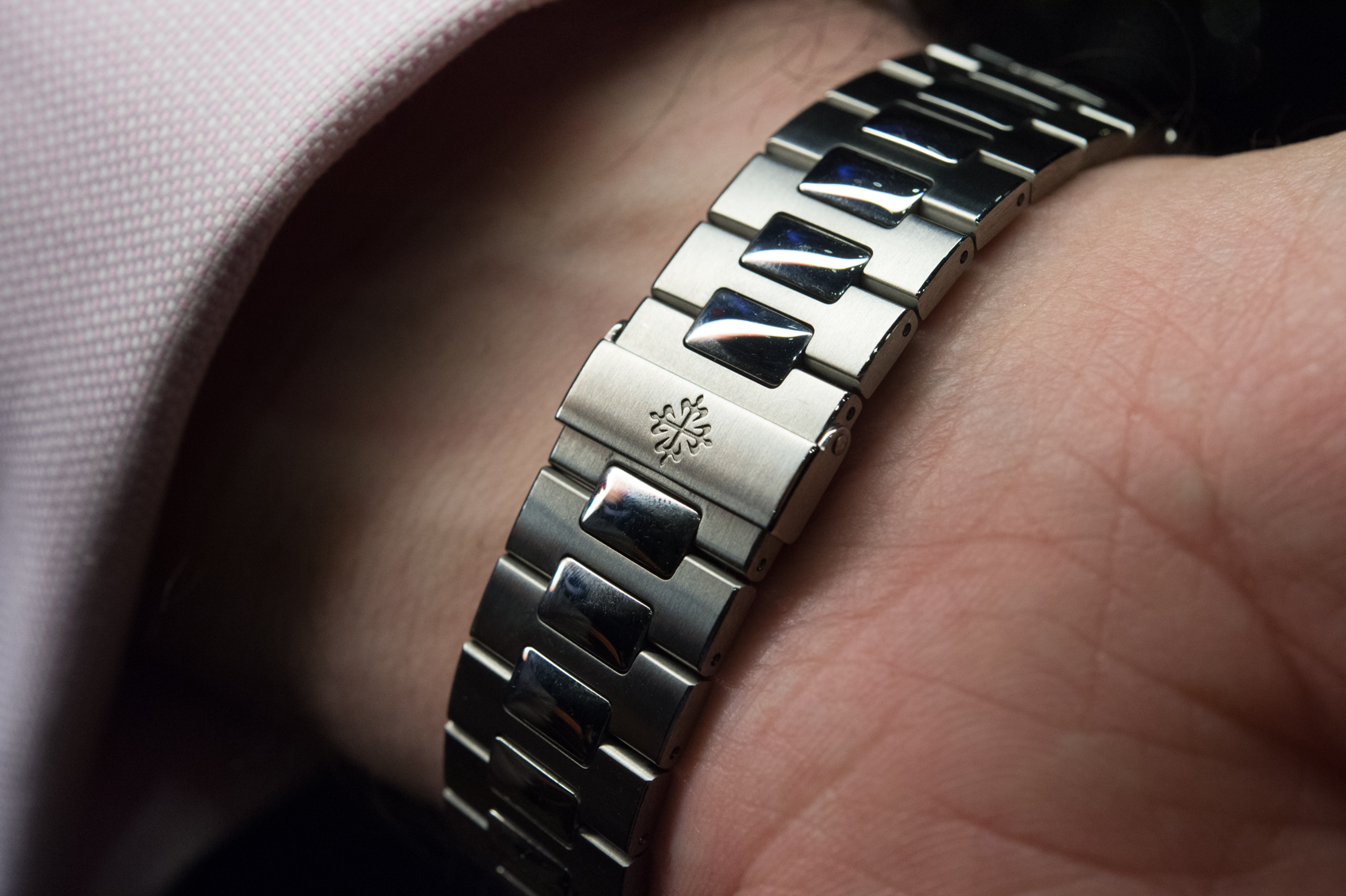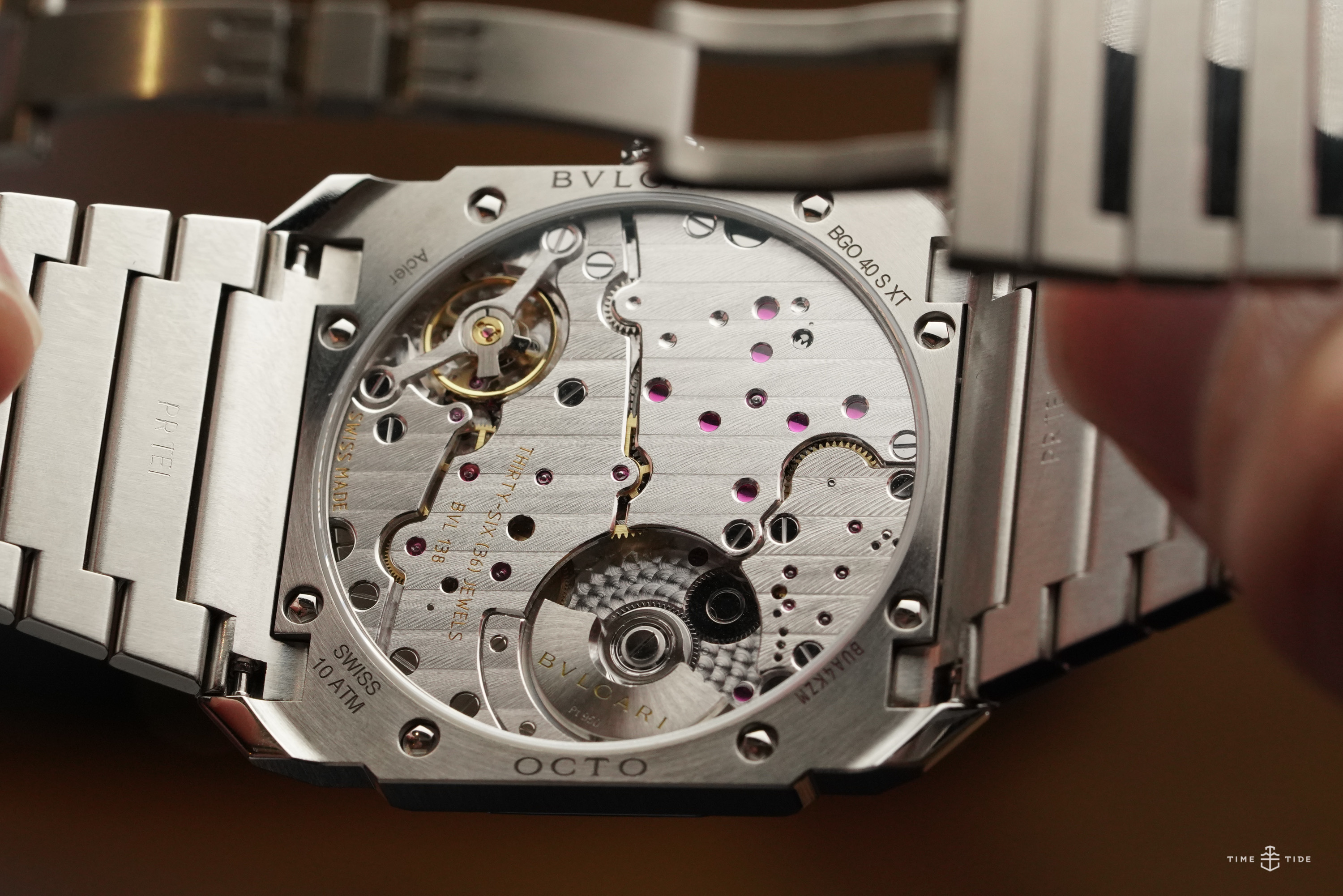Does the Bulgari Octo Finissimo Steel truly belong with the big hitters? We put two Trinity Watches next to it to find out….
Thor SvaboeWhile I have my loupe on and shirtsleeves turned up, consider this article an appointment with a hypnotist. Because, in my opinion, there is a pressing need to reset the preconceptions of the ‘Holy Trinity’, and to call out the desire created by inaccessibility for what it really is: which is FOMO. Not being able to have things. How it makes us want to have things. But the three-watch comparison we have created here is not a setup with a predetermined outcome. Perhaps, after all, we should leave existing structures of worship intact. Perhaps the ‘Trinity’ is timeless? Untouchable?
The Bulgari Octo Finissimo in satin-polished steel that emerged in January this year is the perfect contender to shake up the dream team duo. Finally, there is a more casual, and more capable, steel version of the Octo Finissimo priced to sell, with its virtual gloves on, ready to contest the Sports Integrated Championship belt. The contender will go up against the two icons, the Audemars Piguet Royal Oak Ref.15202 (not pictured in the hand, that’s a 15500) and the Patek Philippe Nautilus 5711, at double and four times the price. A tall order? Let’s see…

The case of the Nautilus
Even through an objective lens, there is no denying the distinctive shape designed by Gérald Genta is part and parcel of the rise of Nautilus as a grail for so many. We all know Genta’s porthole allegory, so let’s face it. In this fighting triangle of cases, the chunky yet perfectly sized Nautilus is tough to beat, with its delicate mix of rounded edges, broad bevelling on the bezel, and those charming side protuberances for lack of a better word involving portholes.
The brushing of the case and bezel top is good enough to imagine a single craftsman being given a case to hand brush for four days with a steel ruler or laser guide, though this might not be true. Ergonomics are superb with the rounded case sides, adding to the psychosomatic effect of wearing what is one of the top grail pieces. This distinctive shape is as masterful as when it debuted in 1976, and throws plenty of powerful punches … but is it worth the hype?
The case of the Royal Oak
Another powerful champion for decades, the Royal Oak, with its svelte luxury tool case, is hard to beat, and there is a reason there are a thousand replicas and concept-thieves. The lines are tougher and more angular than the soft feel of the Nautilus: taut is the word. What stands out is the brushed steel with its even more definite striations than the Nautilus, homogenous in both distance and depth, creating a texture like raw silk, perfectly transitioning from case to bracelet.
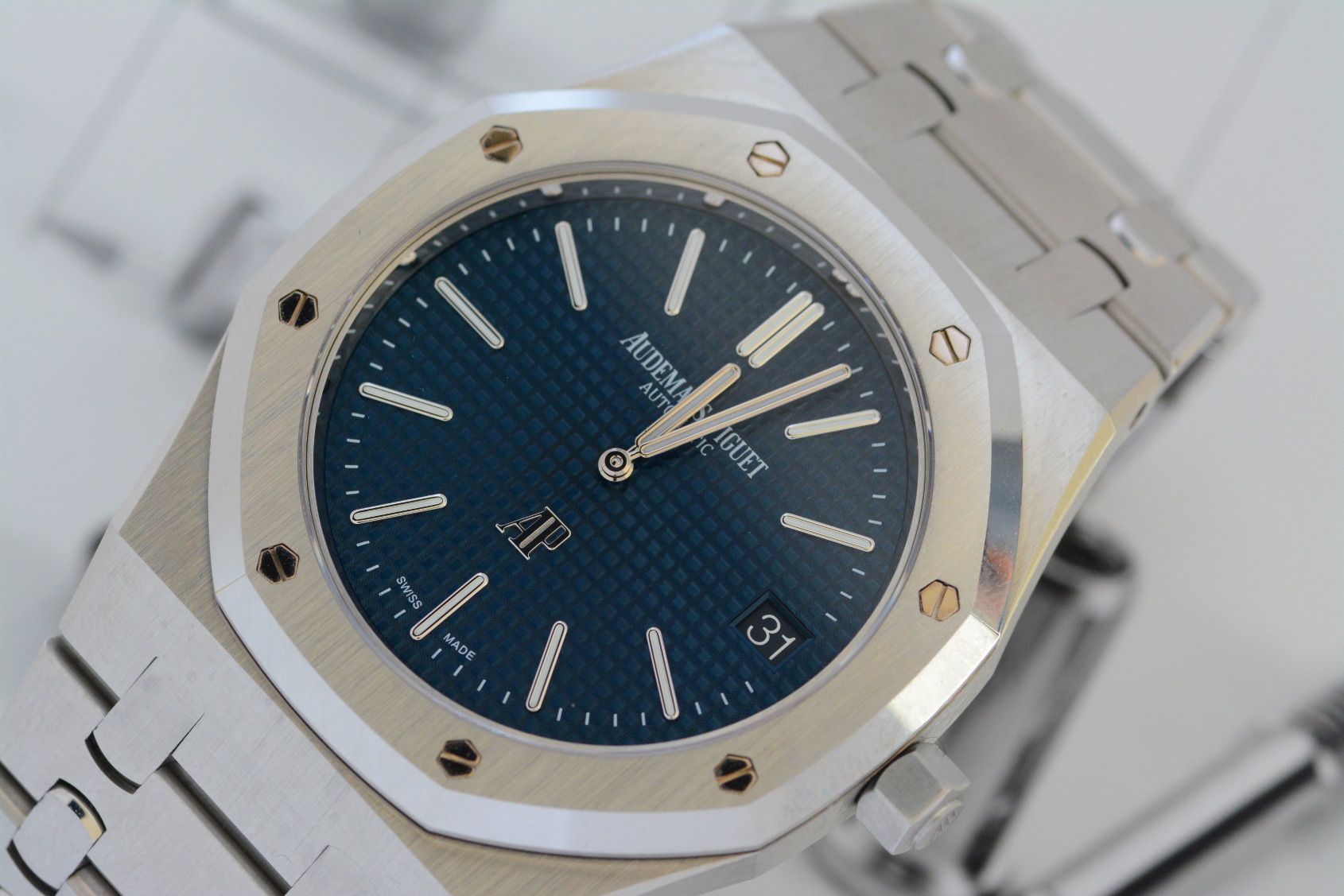
There is a particular tool-like toughness to the octagonal bezel with its famous recessed slotted bolt heads, and what makes the case complete are thin bevels of an exquisite nature, razor sharp and uniform, creating a dazzling play of light. Yes, should you manage to get one of these at retail, this is a case befitting its grail status. But waiting in the wings, gloves on, is the angular architecture of the Bulgari Finissimo.
The case of the Octo Finissimo Steel
I have been fascinated by the grail-monopolising Gérald Genta for a while, and when the first Octo smashed onto the scene with its plethora of shapes, angles and bevels, I was blown away. Its bulkier visage has somehow faded into the background, after the high-tech scientists at the Swiss manufacture of Bulgari went into overdrive in pursuit of sandblasted thin excellence. Delicate matt titanium and gold with an ever-increasing record of complications has put this design in the upper echelons of haute horlogerie, but this year they debuted the more casual and, for that reason, brilliantly placed satin-polished steel version, at a more human $17,800AUD retail.
The Gérald Genta legacy culminates in a bewildering number of facets and bevels on what is an impossibly thin case by anyone’s standard. Here, with its 100m depth rating and delicate satin-brushed appearance, it’s ready, both for action and at a cocktail party. If this was a point-based match based on case intricacy and complexity of finishings, the Finissimo could win it.
The directional brushed surfaces beguile you, including the superb detail of the sunray brushed bezel against the angled brushed case body and lug, intersected by the thinnest, sharpest bezel this side of a laser incision. Every tiny fraction of light creates a glimmer, while there is endless fascination in observing the temple-like structure of faceted shapes including the Genta Octagon signature. Yet, balance is a key word.
The dials
Here, the dial of the Bulgari Octo Finissimo is a product of an ultra-thin obsession, with its minimal visage being a prime example of form following function in its flat surface, while also a necessary calm counterpoint to the fascinating case. In the black version the surface is calm and matt, with delicious sword-like skeletonised hands and a perfect bevelled pointer for the cheeky 7 o’clock placement of the small seconds. In blue, pictured below, it’s even moodier, and more sultry – a bruised rain cloud, heavy with rain. Superb legibility is ensured by delicate indices and the classic logo at 12, perfectly proportioned.
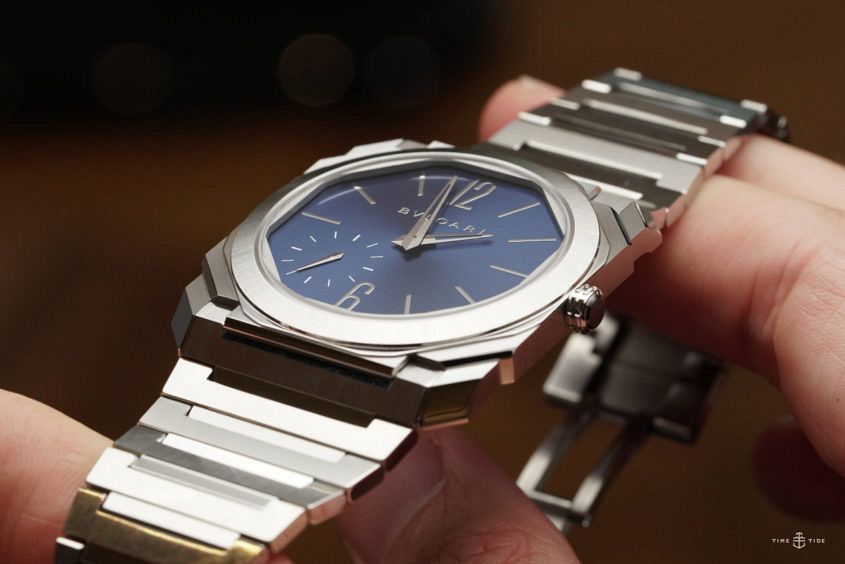
The Royal Oak, with its tapisserie dial, is oft copied, easily understood when looking closely at what makes the Audemars Piguet Royal Oak Ref.15202 a dial-centric watch, in a role reversal of the Octo Finissimo. Yes, the case of the RO has got beguiling details and, with its silken brushed surfaces, a perfect base for the famous octagon tough bezel and the intricacy under the sapphire. The machine-made brilliance of the tapisserie pattern is as fascinating now as decades ago, the tiny perfectly proportioned bevel edged squares marking out a beautiful symmetry in the surface. A smooth rehaut circles the scene, while the polished indices are matched to the baton hands and indented with a sliver of Super-LumiNova, giving this a distinct night-time edge over the non-lumed delicacy of the Octo. I have a feeling Audemars Piguet took weeks to pinpoint the blue colour of the date wheel — it’s that well matched. As octagon-framed dials go, and here we have three, I’d give this the clear win.
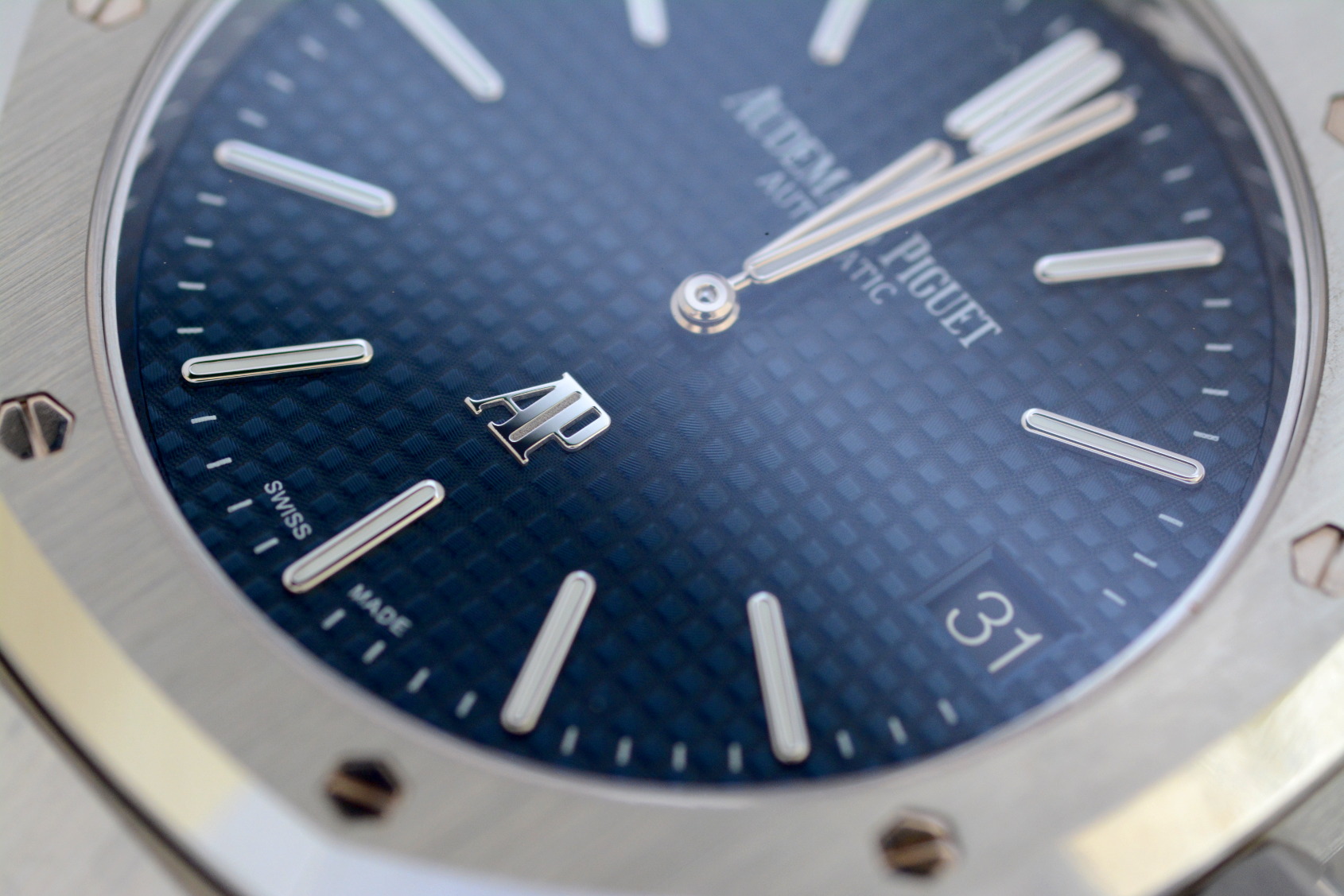
The Nautilus has a distinctly compact look compared to the Royal Oak and wide Octo, while the dial is a proportionist’s dream, framed within the chunky rounded octagon of the bezel. The deep stripes of the surface are calming like the sea, while the distinct shape of the indices works perfectly. Have a good look at the lume-filled 4 and 5 o’clock indices that, while straight-edged, are discreetly cut at an angle towards the rehaut, exactly following the octagonal shape … sheer brilliance. With the small logo recessed into the surface and the charming round edges of the hands, I think I’d be more than able to live with the white date window. Perfection in a small stripy dial seems a simplistic way to sum it up, but nevertheless true. I am REALLY trying to be objective here; it’s not easy.
The integrated bracelets, a definition of sports luxury

How did we come to the point of a bracelet being integrated or not defining the top genre of wristworn art? The two main culprits are right here, and it does not take much wrist time with either to understand that this is where a championship can be settled. The Royal Oak bracelet is in a class of its own, the all-brushed finish seemingly continuing each striation from the case around the wrist. Some of the brilliance lies in the small connecting pair of oblong links having close to zero tolerance where they move within the rectangular face of the large links, and the angular presence still managing to feel soft on the wrist. The outer polished bevel is a perfect sharp contrast to the brushed surfaces, and a marked difference to the Nautilus bracelet.
On the Patek Philippe Nautilus 5711 we have a softer approach as befits the case design: delicate oblong polished centre links juxtaposed against the soft brushwork of the main links. And, yes, you do feel a world of difference if you are used to normal sub-$10,000 bracelets. I will personally send you a prize if you manage to find a single sharp millimetre; this is a watch bracelet that could easily be a piece of jewellery in another life. But, as with many of the details that is haute horlogerie made metal, how much is coloured by the sheer admiration for the image of the Grail within your hands?
The Bulgari Octo Finissimo is – even within its original case design being a reworked Gérald Genta line — wholly futuristic on a bracelet, and strikes a chord within me. That is the main difference here — the fact that you can see echoes of the past and Genta’s genius, but the image is one of contemporary minimalism, something we’ve seen from the first Octo. And the bracelet, in particular, is a fresh take on the genre. Long, straight interlinked brushed pieces; polished bevels where they meet, like a delicate tank track, broad of line and ensuring the feel of the Finissimo is somehow at odds with its svelte nature, and that is why I love it. Light, yet solid. A thin but secure embrace.
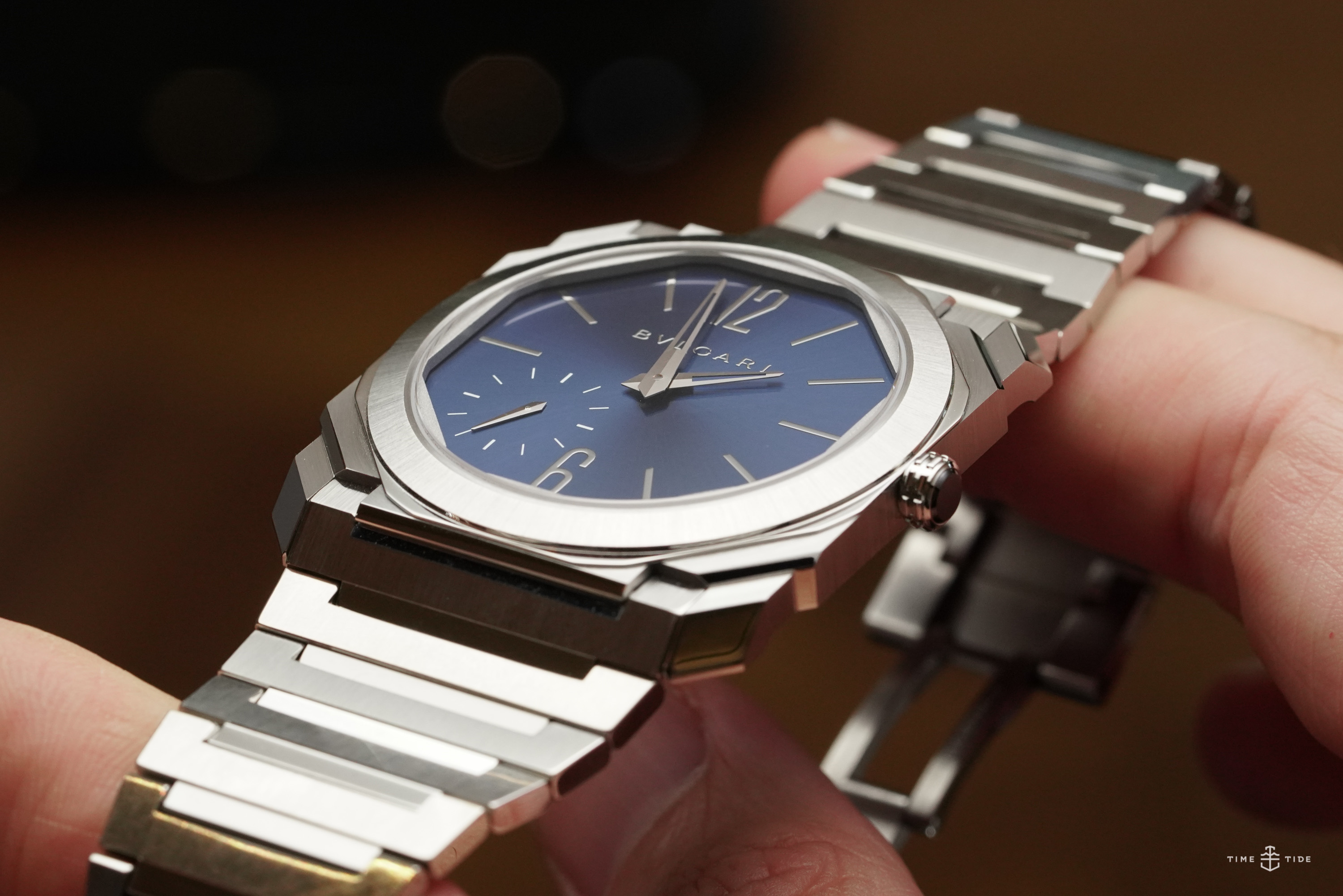
The movements
As I am at risk of committing to what was not meant to be a full review of these three stellar examples of Genta-ism on bracelets, let’s not fully deconstruct the movements at this point. The Bulgari Octo Finissimo manages an exquisite in-house movement within the strict confines of what is a mere 5.25mm case. The Calibre BVL 138 is haute horlogerie made unreal, when you turn it around and see the slim platinum micro-rotor jostling for space with delicately striped mainplates, chamfered balance bridge and the simple notion of this 21,600 vph movement managing the feat of a 60-hour power reserve.
The Patek Philippe Nautilus 5711 has the well-known Caliber 26-330 S C, and yes, it is pure beauty to behold, with the central 21k solid gold rotor circling the Patek Philippe Seal – hallmarked movement. Exquisite detailing, befitting the grail status of the 5711, makes you lost in the details should you take the loupe out — seriously lost. But does it feel a bit on the chubby side next to the flyweight slim Bulgari, and with a small power reserve at 35-45 hours?
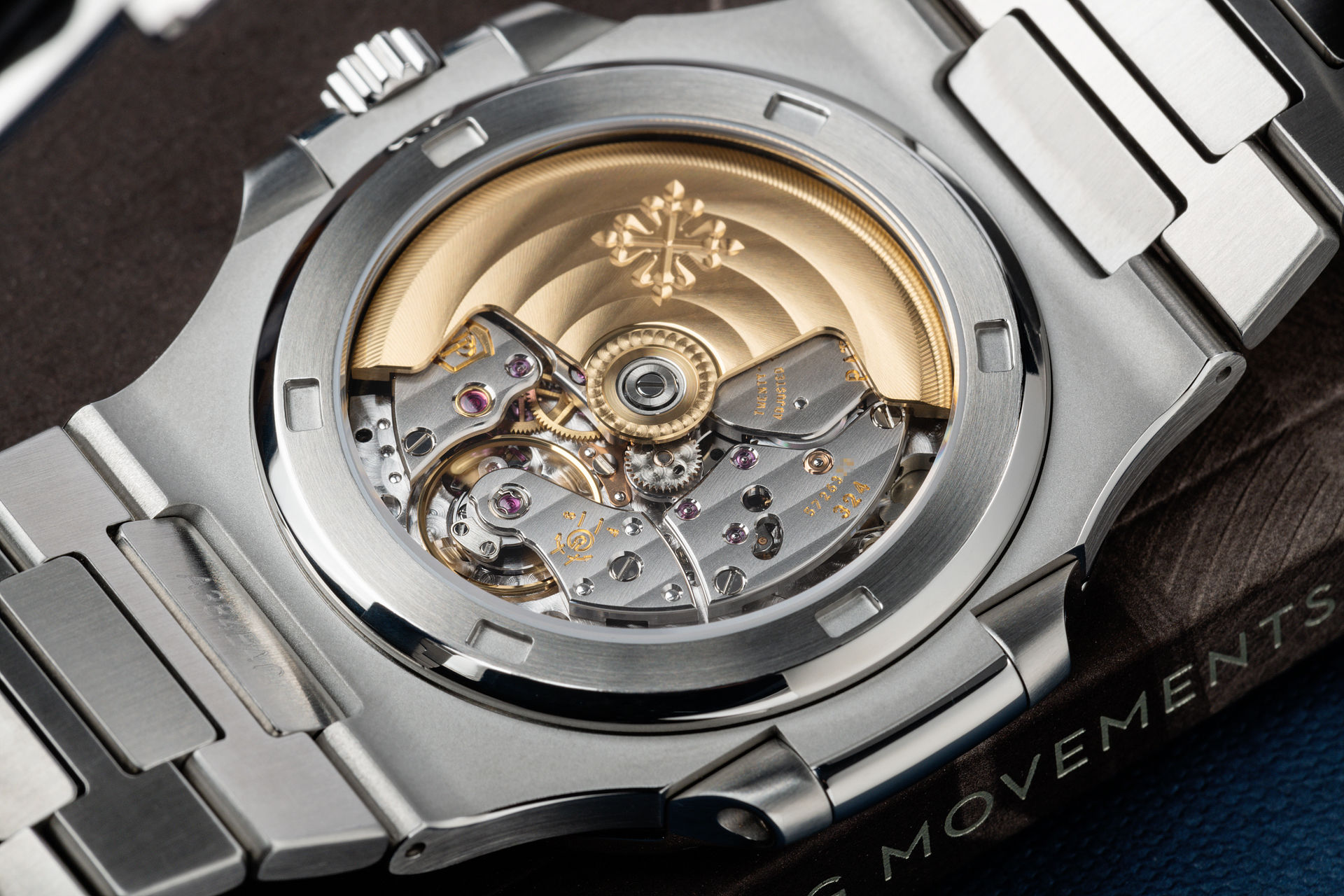
The Audemars Piguet Royal Oak Ref.15202 has also got an exquisite self-winding movement, the 2121 calibre. Measuring a remarkably slim 3.05mm in height, it is considered one of the finest ultra-thin movements that is available. Offering a more than satisfactory 40 hours of power reserve, it is a traditional movement that speaks to the history of the watch that it is cased in, and features distinct sharp anglage with Côtes de Genève striping and a striking skeletonised gold rotor.
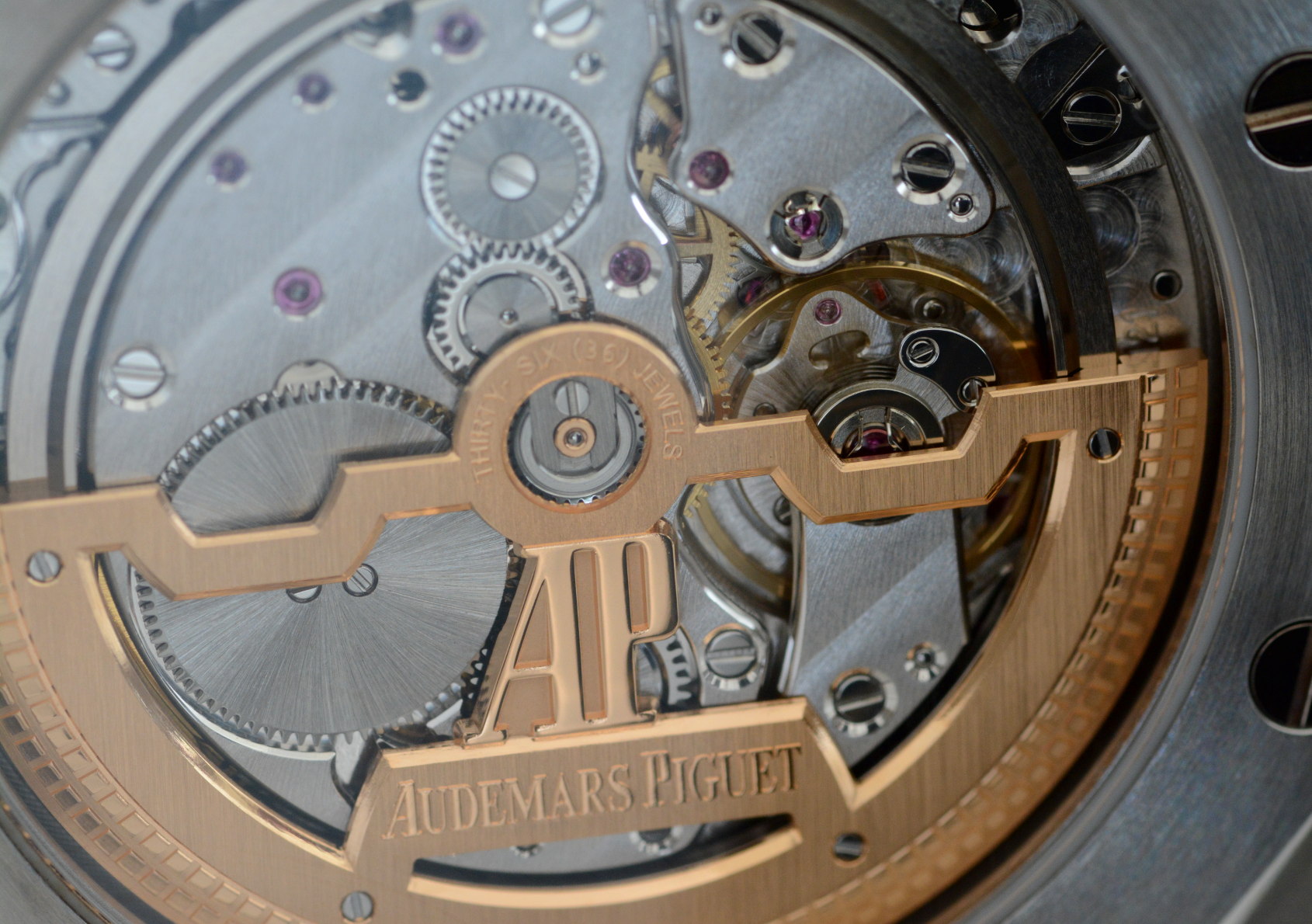
Can there be a conclusion, and how does value come into the equation?
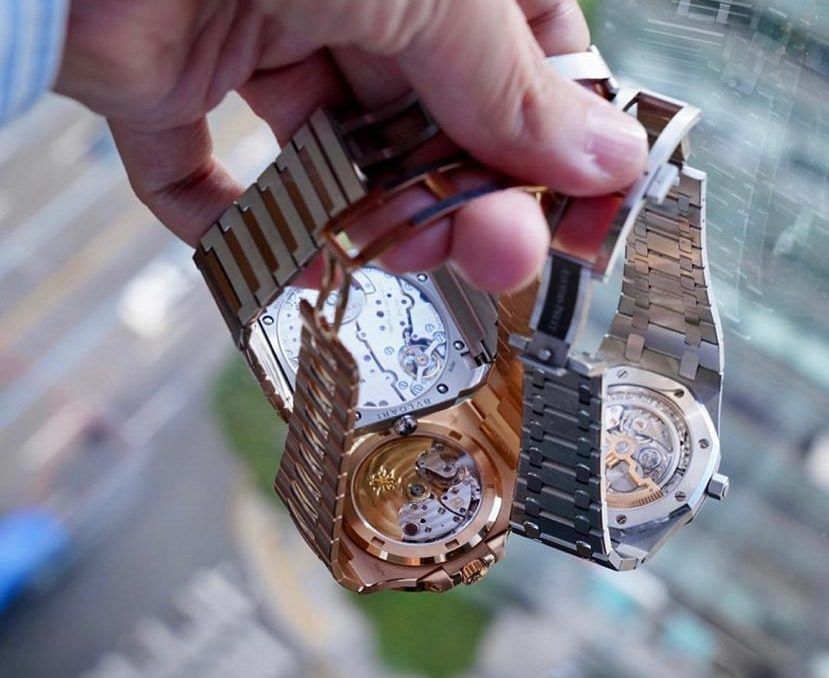
Well, yes and no. And yet, I feel that the point is made even if no victor came out of this bout. Should the match be based on value alone, with an emphasis on case design, and the brilliance of the ultra-thin Finissimo movement, the Bulgari has the championship belt. Should the focus be on pure objective judgment – impossible as that may seem — a favourite will still be coloured by personal preferences, like bracelet design, dial details and size. Yes, the Finissimo is slim like no other, but rather wide, whereas the Nautilus is still a soft, small 40mm wonder to behold. The conclusion is that Bulgari, with its base model of the Finissimo in steel, belongs on the podium together with the Royal Oak and Nautilus, regardless of price or size, as the value is vastly more than the sum of its slimmed-down parts.





